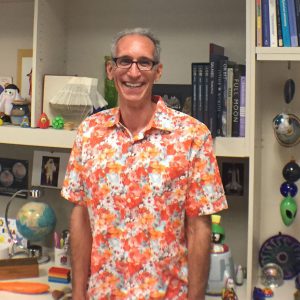Keck Dean and Astrophysicist Ulysses J. Sofia Illuminates the Solar Eclipse
In anticipation of the first total eclipse of the sun visible from North America in nearly 40 years, we asked our own resident astrophysicist, Keck Science Department Dean Ulysses J. Sofia, for a couple of reflections on the moment when the moon passes between the earth and the sun, fleetingly changing the world as we know it. An expert on solar variation and the interstellar medium, Sofia will travel to Oregon to watch—safely, with proper eye wear and such—the sunless sky. Although he has seen a total solar eclipse twice before, he says the celestial event on August 21 is absolutely worth a 900-mile trek.
“Anybody who has a chance to see a solar eclipse should do it,” Sofia said. “It is really phenomenal, something you can’t describe.”
But if you’re an astrophysicist, one who has worked for NASA and who started crunching satellite data in high school, you might still have a few thoughts to share about the upcoming uncommon alignment of heavenly bodies.
Q: Why are solar eclipses such a big deal?
Sofia: Solar eclipses are a lot rarer for people to see than lunar eclipses because they have a very narrow path on the earth. During a lunar eclipse, the earth’s shadow is on the moon, so anyone on earth who can see the moon—which is half the earth—can see that happening. In contrast, the stripe across the earth of the moonshadow is very small.
Q: The sun’s diameter is 400 times bigger than the moon’s—how can the moon block out the sun completely?
 Keck Science Department Dean Ulysses J. Sofia
Keck Science Department Dean Ulysses J. SofiaSofia: The sun is 400 times farther away from the earth than the moon is. This coincidence of being 400 times bigger and 400 times farther away makes the moon and the sun almost exactly the same angular sizes (how big they look to us in the sky). It is one of the most random things in the world that they are almost precisely the same angular size. So close, in fact, that the small non-circularity of the earth’s and moon’s orbits means that the moon isn’t even always big enough to cover the entire surface of the sun.
Q: During an eclipse, is there anything to see besides not seeing the sun?
Sofia: You can see different layers of atmosphere of the sun as the moon covers the sun itself. The yellow part we always see is called the photosphere; as the moon blocks that, you may be able to see the chromosphere, a red, cooler layer of the sun. Then, as that gets covered up, you see the corona, which is this really diffuse, fluffy-looking layer that streams away from the sun. All stars have these layers, but a solar eclipse is the only way you can actually see them with the “naked eye.”
Q: What’s the moment of total eclipse like?
Sofia: There’s an eeriness to the light as the moon covers the sun. Everything gets very blue. Usually birds stop chirping. It’s beautiful.
Q: Do you have one piece of advice for Monday’s eclipse?
Sofia: Protect your eyes and put your camera down. Experience it, live it rather than try to preserve it.
–posted August 17, 2017